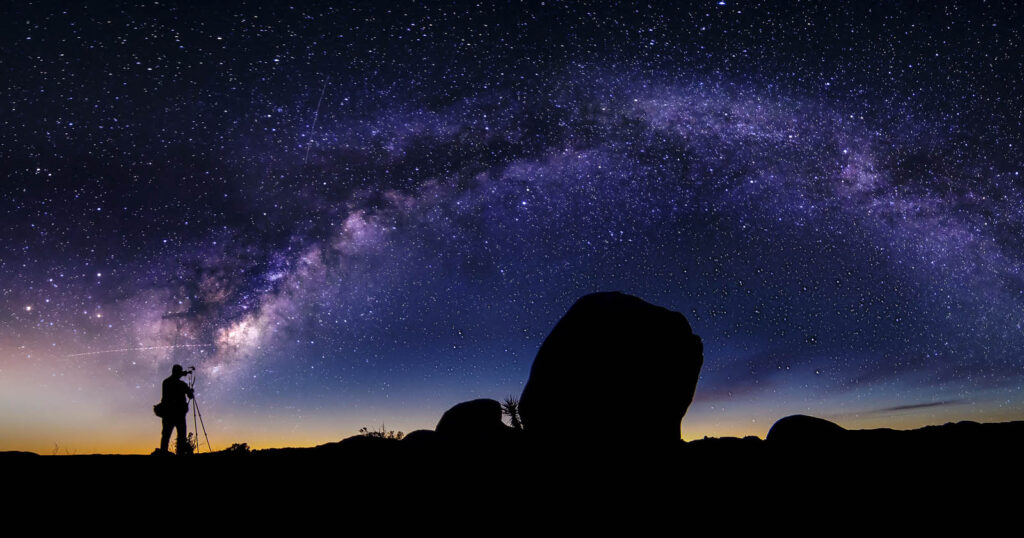Capturing the splendor of the night sky in pictures, from stars and planets to galaxies and celestial events, is an intriguing activity known as astrophotography. Regardless of the level of expertise you have in taking pictures; the cosmos offers a seemingly endless backdrop for your artistic endeavors.
The best thing about embracing photography as your career option is that you can explore the various subgenres it provides. Check out Yvette Heiser talks about Food Photography.mp4 to know more about how to capture the best food photographs.

The Basics of Astrophotography
Photographing celestial objects at nighttime is the very essence of astrophotography. The subjects can be as straightforward as starry skies or as sophisticated as close-ups of planets or deep-space events like galaxies and nebulae. You’ll require some basic things to get started:
- Camera: You need to have a mirrorless or DSLR camera for astrophotography. These cameras enable fine-tuning the exposure by using the manual shutter speed, aperture, and ISO controls.
- Sturdy Tripod: In order to obtain clear, vivid pictures for your astrophotography initiatives, a sturdy tripod needs to be used. It prevents the camera from swinging about during extended exposures. This stability is crucial for capturing the fine shape of stars, planets, and various other heavenly bodies.
- Wide-Angle Lens: To get the best night sky view, use a wide-angle camera lens with a small aperture (f/2.8 or lower). Consider purchasing a telephoto lens or an astrophotography lens if you’d like to get up close and personal with faraway celestial bodies.
- Remote Shutter Release: Astrophotography benefits tremendously from making use of a remote shutter release or intervalometer, as this minimizes the possibility of camera shaking during exposure. This degree of precision is necessary for capturing crisp images of the celestial bodies in the night sky.
Camera Settings and Techniques
If you want full authority over your camera’s settings, you need to change to manual mode. A low f-stop (large aperture) allows for more light. It’s preferable to use an aperture of f/2.8 or lower. Try different exposure times, but limit it to under 30 seconds to prevent blurry star trails. Start using a low ISO (400) to minimize the impact of noise. Make any required exposure adjustments whenever you feel like it.
In astrophotography, focus is essential. Focus on a star in the distance or other object employing manual focus and zooming in on the actual image. Exposure times that are longer work better for capturing starry skies. However, with exposure longer than 20-30 seconds, you could see star tracks caused by Earth’s spin. Image stacking is a typical technique for analyzing objects far away in space. Reduce interference while bringing out tiny details by capturing many short exposures and combining them in a post.
Have you checked out the blog Yvette Heiser Texas – Photography and How it Impacts Lives yet? The field of astrophotography can be intriguing and lucrative. There are limitless opportunities for shooting the starry sky and all of its splendor because each night sky is unique.
